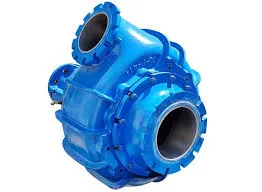TEL:
+86 13120555503
Czech
- Afrikaans
- Albanian
- Amharic
- Arabic
- Armenian
- Azerbaijani
- Basque
- Belarusian
- Bengali
- Bosnian
- Bulgarian
- Catalan
- Cebuano
- Corsican
- Croatian
- Czech
- Danish
- Dutch
- English
- Esperanto
- Estonian
- Finnish
- French
- Frisian
- Galician
- Georgian
- German
- Greek
- Gujarati
- Haitian Creole
- hausa
- hawaiian
- Hebrew
- Hindi
- Miao
- Hungarian
- Icelandic
- igbo
- Indonesian
- irish
- Italian
- Japanese
- Javanese
- Kannada
- kazakh
- Khmer
- Rwandese
- Korean
- Kurdish
- Kyrgyz
- Lao
- Latin
- Latvian
- Lithuanian
- Luxembourgish
- Macedonian
- Malgashi
- Malay
- Malayalam
- Maltese
- Maori
- Marathi
- Mongolian
- Myanmar
- Nepali
- Norwegian
- Norwegian
- Occitan
- Pashto
- Persian
- Polish
- Portuguese
- Punjabi
- Romanian
- Russian
- Samoan
- Scottish Gaelic
- Serbian
- Sesotho
- Shona
- Sindhi
- Sinhala
- Slovak
- Slovenian
- Somali
- Spanish
- Sundanese
- Swahili
- Swedish
- Tagalog
- Tajik
- Tamil
- Tatar
- Telugu
- Thai
- Turkish
- Turkmen
- Ukrainian
- Urdu
- Uighur
- Uzbek
- Vietnamese
- Welsh
- Bantu
- Yiddish
- Yoruba
- Zulu
Telephone: +86 13120555503
Email: frank@cypump.com
Led . 14, 2025 12:03 Back to list
Vertical Slurry Pumps
Navigating the world of slurry pump parts can be a formidable task, especially for those new to the industrial sector. Designed to transport a mixture of fluid and solid particles, slurry pumps are essential in various industries, including mining, construction, and wastewater management. Understanding the intricate components of these pumps not only enhances your operational efficiency but also prolongs the equipment's lifespan.
Bearings in a slurry pump support radial and axial loads, keeping the shaft aligned and minimizing friction. Quality bearings are vital for reducing energy consumption and preventing mechanical failure. Regular lubrication and maintenance checks exponentially increase the lifespan of the bearings, subsequently enhancing the overall durability of the pump. Finally, the pump's shaft is the lifeline that transmits power from the motor to the impeller. It must be robust enough to handle the mechanical loads without bending or deforming. Stainless steel or alloy shafts are preferable due to their high resistance to corrosion and mechanical stress. In conclusion, a comprehensive understanding of slurry pump parts is paramount in optimizing the performance and longevity of your industrial operations. By selecting the correct impeller configuration, casing material, sealing method, bearings, and shaft, you not only increase productivity but also significantly reduce operational costs. Armed with this knowledge, industry professionals can make informed decisions, leading to improved efficiency, reduced downtime, and cost savings. A proactive approach to understanding and maintaining slurry pump parts decidedly positions businesses at the forefront of industrial innovation and operational excellence.


Bearings in a slurry pump support radial and axial loads, keeping the shaft aligned and minimizing friction. Quality bearings are vital for reducing energy consumption and preventing mechanical failure. Regular lubrication and maintenance checks exponentially increase the lifespan of the bearings, subsequently enhancing the overall durability of the pump. Finally, the pump's shaft is the lifeline that transmits power from the motor to the impeller. It must be robust enough to handle the mechanical loads without bending or deforming. Stainless steel or alloy shafts are preferable due to their high resistance to corrosion and mechanical stress. In conclusion, a comprehensive understanding of slurry pump parts is paramount in optimizing the performance and longevity of your industrial operations. By selecting the correct impeller configuration, casing material, sealing method, bearings, and shaft, you not only increase productivity but also significantly reduce operational costs. Armed with this knowledge, industry professionals can make informed decisions, leading to improved efficiency, reduced downtime, and cost savings. A proactive approach to understanding and maintaining slurry pump parts decidedly positions businesses at the forefront of industrial innovation and operational excellence.
Share
Next:
Latest news
-
ISG Series Vertical Pipeline Pump - Chi Yuan Pumps Co., LTD.|High Efficiency, Low Noise, Durable
NewsAug.02,2025
-
ISG Series Vertical Pipeline Pump - Chi Yuan Pumps | High Efficiency, Low Noise
NewsAug.02,2025
-
ISG Series Vertical Pipeline Pump- Chi Yuan Pumps Co., LTD.|High Efficiency&Compact Design
NewsAug.02,2025
-
Heavy-Duty Mining Sludge Pumps - Wear-Resistant Slurry Handling
NewsAug.02,2025
-
Horizontal Split Case Pump with GPT-4 Turbo | High Efficiency
NewsAug.01,2025
-
ISG Series Pipeline Pump - Chi Yuan Pumps | High Efficiency, Durable Design
NewsAug.01,2025










